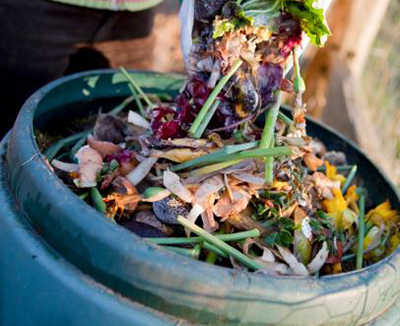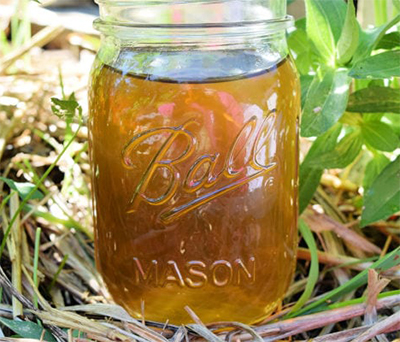How Recycled Organic Living Soil (ROLS) Creates Great Weed
Undoubtedly, kitchen scraps, wood chips, coffee grounds, and grass clippings belong nowhere else but the waste bin, right? If we had no idea what Recycled Organic Living Soil (ROLS) was, our answer would have been a big YES. But we know that ROLS have made these “useless” materials vital to producing healthy cannabis plants so much that they’re now viewed as valuable resources in the weed industry.
Want to know more about how ROLS feed your cannabis plants and makes them thrive? Let’s get right into it.
What’s ROLS (Recycled Organic Living Soil)?
As the name implies, ROLS is a living soil that utilizes organic compost as a growing method to improve soil fertility. Recycled Organic Living Soil is also an effective technique for reducing input costs in the long term. It creates a healthy environment for cannabis plants to be properly nurtured with each growth phase.
These are the three primary principles that make up the ROLS technique:
Recycled
 ROLS focuses on recycling kitchen scraps, grass clippings, and other waste materials. This produces a mineral-rich medium for enhancing plant growth.
ROLS focuses on recycling kitchen scraps, grass clippings, and other waste materials. This produces a mineral-rich medium for enhancing plant growth.
Organic
There are no pesticides, fertilizers, or herbicides involved in this practice. As such, besides saving money, ROLS also minimizes the possibility of having chemical residues in your garden.
Living Soil
ROLS comprises a diverse number of bacteria, fungi, and other microbes. This improves productivity and boosts plant health.
Using ROLS as your preferred weed grower offers numerous benefits, including reduced costs, less waste, and improved fertility. Plus, an organic approach preserves soil life, benefits the environment, and reduces the risk of pollution since it doesn’t involve harsh chemicals.
Making Living Soil
Living soil is healthy soil, and you can make one via any of the following methods:
Composting
Composting is all about producing natural fertilizers by decomposing organic matter. There are generally two types of compositing—cold and hot. Cold compositing means piling up the organic matter without turning it. Meanwhile, hot composting involves using heat to quicken the decomposition process by turning the compost pile at regular intervals.
Compost Tea
 Compost tea is simply composting material in its liquid form. This method exposes compost to oxygen and a sugar source to significantly increase the presence of microbes.
Compost tea is simply composting material in its liquid form. This method exposes compost to oxygen and a sugar source to significantly increase the presence of microbes.
To make compost tea, add unsulphured molasses (50g) and compost (400g) to a 19 liters bucket of non-chlorinated water. Put an air stone in the bucket, ensuring that it keeps running for at least 24 hours and, at most, 36 hours. Next, add water to the tea to dilute it in a ratio of 10:1. Your compost tea is ready, and you can use it to inoculate the soil or leaves.
Mulching
Mulching improves soil quality by using grass clippings and other forms of dead mulches to preserve moisture and protect the soil from the sun. To make living mulches, all you have to do is ensure that you sow a variety of plants like red clover and winter squashes to cover exposed soil.
KNF and JADAM
Korean Natural Farming (KNF) and Jayonul Damun Saramdul (JADAM) produce inoculants and fertilizers by leveraging microbes and plant matter. JADAM is the preferred system for beginners and involves mixing a variety of organic matter, a handful of compost, and water in a bucket. After some weeks, The mixture is diluted with 100 parts water per part.
Bokashi
Bokashi uses the EM (effective microorganisms) composting method by using waste food and anaerobic fermentation to create pre-compost. It’s pretty simple—add all food layers and scatter a spoonful of bran per few centimeters. However, growers may be able to access inoculated bokashi bran that already has the needed microbes.
What Role Does Organic Soil Play in Building a Healthy Food Web?
Here’s how bacteria, fungi, and other organisms help to maintain a healthy and balanced soil food web:
- Bacteria, nicknamed the soil’s true heroes, work hard to breakdown nitrogen-rich organic matter
- Fungi act as synergistic and help to decompose organic matter
- Nematodes regulate soil organism population and help plants access nutrients
- Worms introduce air into the soil and improve its nitrogen content
ROLS-Centered Growing Techniques
You don’t have to use ROLS as a stand-alone growing method. In fact, the common practice is to use it with other agricultural practices including:
- Biodynamic farming
- Permaculture
- No-till
- Indoor living soil
Note that you can reuse living soil, especially if you grow your cannabis plants in pots. Once you’ve harvested your plants, transfer your container contents onto a tarp, mix it with some dry amendments and fresh ROLS, and return to the pot.
Wrap Up
Are you considering ROLS as your cannabis-growing method? You’ve got our full support. Besides being inexpensive, it’s also one of the best techniques for significantly improving plant fertility.

